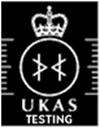Room Integrity Testing
Room Integrity Testing
Are your high value systems and assets protected from fire and water damage? All gaseous fire suppression system that protects enclosures such as data/server rooms, is required to have a room integrity test when it is commissioned as per the requirements of British Standards BS EN15004 and NFPA 2001. Annual integrity testing is also a requirement of the BFPSA and is carried out by all major commercial institutions, such as banks and data companies.
In the corresponding ISO standard BS EN15004, it states that it is mandatory to undertake the integrity testing annually on your enclosure if it’s protected by a gaseous fire suppression system’. It is worth noting that if you don’t have valid enclosure certification you may negate your buildings insurance in the event of a fire.
BS EN 15004 also stipulates that if you undertake any modifications to the building envelope within the annual period further testing will be required as your annual certification will be invalid.
We offer a comprehensive integrity testing service throughout England and Wales. If you would like some more information in regards to testing your enclosure, please contact us now at info@airpressuretesting.co.uk or call us direct on: 01525 303905
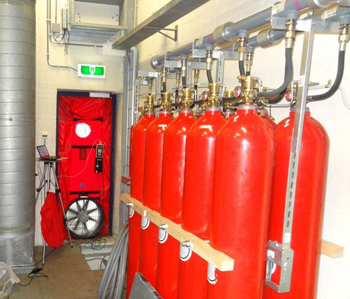
Why Use Air Pressure Testing?
Air Pressure Testing has undertaken hundreds of room integrity tests on varying room types such as server and data rooms to huge power station turbine enclosures. We have the experience to help you achieve a test pass at the first attempt. We are one of a very few companies that fully understand the theory behind extended discharge and hypoxic tests and are also able to undertake localised smoke testing to highlight air leakage paths, to allow clients to undertake targeted sealing works to improve retention times and attain a room integrity test pass.
What is a Room Integrity Test?
A room Integrity test predicts how long fire suppressant agents take to descend to a given level in the room without having to discharge the actual suppression system - this is usually 10minutes for the most popular gases). The room is then sealed, and then a series of tests is undertaken.
The blower fan unit is temporarily fixed into the test doorway to pressurize and depressurize the enclosure. Afterwards a series of pressure and air flow measurements are taken from which leakage characteristics of the enclosures are established.
The predicted retention time is calculated the type of extinguishing system data and the leakage characteristics.
Are your high value systems and assets protected from fire and water damage?
For most extinguishing system types, a retention time of ten minutes is the minimum period the suppressant agents is required to be retained for within the enclosure. NFPA 2001, Standard on Clean Agent Fire Extinguishing Systems, requires that a minimum concentration of 85% of the adjusted minimum design concentration be held at the highest level of combustibles for a minimum period of 10 minutes. This is usually long enough to prevent re-ignition for most deep-seated fires and should provide adequate time for the emergency services to attend and prevent the fire taking hold.
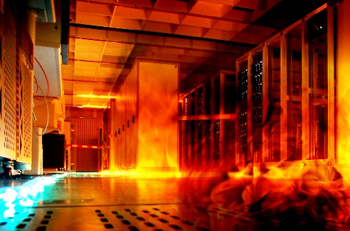
How long will the Room Integrity Test take?
Our basic fan test unit can undertake enclosure tests on rooms up to an envelope of 900m2. It usually takes between 25 - 30 minutes to set up - as long as the room is fully prepared and isolated. Once we have set up the equipment the test takes a further 10-20 minutes to conduct if it passes straightaway; however, it may take longer to inspect if smoke testing is required due to a test failure.
The results can be produced on the same day, with the full detailed report within 24 hours. We can usually undertake up to two enclosure tests on the same site, if the enclosures are in close proximity and are fully prepared for the testing. It is worth noting that throughout the test, there is no requirement to shut down any Computer equipment within the test enclosure so disruption can be kept to minimum.
How often is a Room Integrity Test required?
It is a requirement of British Standards BS EN15004 that any enclosure protected by a gaseous fire suppression system should have a room integrity test when it is commissioned and annually thereafter. It should also be retested if any works are carried out to the building envelope, this can include works such as the installation of a new door or seals and/or new cables, pipe work or ductwork.
Studies reveal that the predominant cause of failure of gaseous extinguishing systems is poor room sealing. It is also found that the room integrity performance reduces with time, this is usually due to changes in construction the additions of cabling or services, or simply by natural movement of the enclosures envelope.
It is important to ensure that good room integrity is established and maintained within areas such as data centre spaces, particularly bearing in mind the potential consequences of system failure.
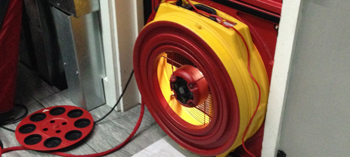
What Happens If I Don't Have Valid Enclosure Integrity Certification
It is a requirement of the BFPSA that all protected enclosures have valid enclosure certification; it's also a requirement of all major commercial institutions. The benefits of ensuring room integrity are widely recognised by insurers and regulatory authorities, who frequently require such testing to prevent critical system failure valuable assets such as server rooms and data centres.
In the relevant ISO standard BS EN15004, it states that it is 'mandatory that integrity testing is carried out annually on all enclosures protected by a gaseous fire suppression system'. If you don't have valid enclosure certification you may negate your buildings insurance in the event of a fire. In all instances the integrity certification should always be attached to the front of the protected enclosure/s to show it has valid certification and to clearly show the dates of the next test. The certification also has other useful information that should be adhered to at all times. If you don't have integrity test certification fixed to the front of the enclosure, then the chances are that your enclosure may not have valid certification. In all instances do not panic, just call us on 01525 303905 and we will organise a test date to suit all parties.
In many cases the stakeholder may not be aware that works have taken place inside the server room, which may have reduced the integrity of the enclosure envelope, which is why it's always best to plan any works in protected enclosures so that everyone's aware of the importance of maintaining the integrity of the enclosure envelope to ensure that in the event of a fire, the gaseous suppressant doesn't leak straight through excess air leakage paths. Also, if a room integrity test plan is followed at all times, then the integrity test can be programmed straight after the service works have taken place. To reduce the chance of potential fire damage to your valuable assets, it is essential that a room Integrity test plan is adhered to at all times. APT can formulate a testing schedule and warn you of any impending tests to ensure you have valid certification at all times.
Remedial Works to Protected Enclosures
In our experience the majority of room integrity test failures are caused by the lack of enclosure integrity, and/or the ability of the enclosure to adequately retain the extinguishant agent. Often the correct initial design concentration can be achieved but the enclosure is not able to retain the extinguishant agent for the required holding period due to the large amount of air leakage paths.
If the enclosure has failed the room integrity test, remedial work should be undertaken to reduce the air leakage paths within the building envelope, this may include;
a. Sealing all cracks or penetrations leading into or out of the protected enclosure.
b. Sealing all pipe chases and cable trays to be sealed around the outside and inside where they penetrate the perimeter boundaries of the protected enclosure
c. Walls to be caulked around the inside perimeter at the floor and ceiling junctions.
d. Sealing of porous blockwork walls - this can be remedied by painting and ensuring the mortar joints are full.
e. The addition of door sweeps or drop seals, weather stripping around jambs.
f. Sealing of windows/glazed sections to the area.
g. The sealing of the underside of doorways within the floor void.
h. Ensure that air conditioning dampers are closing properly.
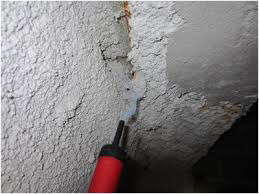
Smoke testing is one of the best ways of locating air leakage paths. This is undertaken whilst the room is pressurised, the smoke will then move towards the air leakage path. Targeted remedial works can then be undertaken to seal the building envelope. Once the appropriate remedial work has been undertaken then the enclosure should be retested to confirm if an acceptable level of integrity has been reached.
Room Integrity Testing - Frequently Asked Questions
We have collated some of the most frequently asked questions related to Room Integrity Testing. We hope it helps to you to understand the requirements of BS EN 15004.
a. Why do I need a fire enclosure test on my server room?
The test is a requirement of the British Standard for gaseous fire extinguishing systems - BS EN:ISO 14520. Most fire insurers will require evidence that the test has been conducted and the result is satisfactory.
b. How quickly can a room integrity test be arranged?
A - Usually within a few days.
c. How long does the enclosure test take?
A - Usually between 1 and 2 hours.
d. Will the server room integrity test set off alarms?
A - No. The enclosure test is completely independent of the detection system.
e. Is the room integrity test disruptive?
A - No. It is only necessary to stop access to the room for 10-15 minutes. Personnel can continue to work in the room. The enclosure test can be paused if immediate access becomes required.
f. Do servers need to be switched off during the enclosure integrity test?
A - No the equipment can keep running.
g. Do air conditioning units need to be switched off during the enclosure integrity test?
A - Recirculation (chiller) units may continue to run. Air supply/extract ducts passing into the enclosure will need the dampers closed or temporarily sealed.
h. Will I get a certificate if I pass the room integrity test?
A - It will be issued within a few days. This should be retained for possible inspection by the authorities/insurers. A summary certificate can be issued at the time of enclosure test if required.
i. Where do I store the pass certificate?
A -It is a good idea to laminate the certificate and then attach it to the front of the enclosure door, as it lets the fire officer know when the next annual test should be undertaken.
j. What happens if the room fails the server room enclosure test?
A - We can carry out an inspection to identify leakage paths for remedial sealing. These will be pointed out at the time of the enclosure test and a plan included in the report. It is recommended that a retest be conducted after remedial action to confirm the adequacy of the retention time.
k. Can remedial sealing be done at the time of the server room enclosure test?
A - Yes, provided the leakage can be swiftly remedially, or temporarily, sealed.
l. Can APT undertake remedial sealing?
A- Yes we can do this if requested or the client can arrange remedial sealing themselves.
m. Do you supply any literature to help us prepare for the enclosure test?
A - Yes, we supply all our clients with an easy to follow checklist to help them prepare for the room enclosure test.
n. How often should the room integrity test be undertaken?
A - The relevant British Standard (BS EN:ISO 14520) specifies that the test should be conducted annually as part of routine maintenance and/or after works have taken place to the enclosure envelope.
Room Integrity Test Terminology
Descending Interface
The fire retardant agent is discharged from the ceiling -highest point) into the protected enclosure. An 'interface' with a constant concentration - known as the Initial Concentration) descends from the discharge level as gas leaves escapes from the enclosure via air leakage paths. The time it takes for this 'interface' to reach the minimum protected height such as the top of the server racks is defined as the Hold time. The time retention time is usually set at 10 minutes.
Continual Mixing
The suppressant Agent is discharged at near-ceiling level into the enclosure, thereafter fans circulate gas throughout the room, resulting in a uniform agent concentration. This concentration begins at initial concentration and lowers until it eventually reaches a specified minimum concentration. The time it takes for the initial concentration to reach the minimum concentration is defined as the hold time.
Extended Discharge
Typically extended discharges consist of an initial discharge for 10 to 60 seconds to get the concentration up to the design concentration. Then the extended discharge will continue at a lesser rate. The intention is for the extended discharge to replace the agent that leaks out of the room. It is assumed that the extended discharge will create enough turbulence to create a continual mixing situation throughout the extended discharge period.
We hope the above information has been helpful, if you require a room integrity test or information concerning sound testing, please contact us now at info@airpressuretesting.net or call us on 07775623464.
APT Sound Testing Services
Head Office: Sayells Farm, 7 Harlington Road, Upper Sundon, Bedfordshire, LU3 3PE


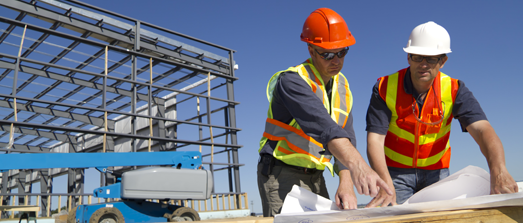

 Part E Sound Tests
Part E Sound Tests
